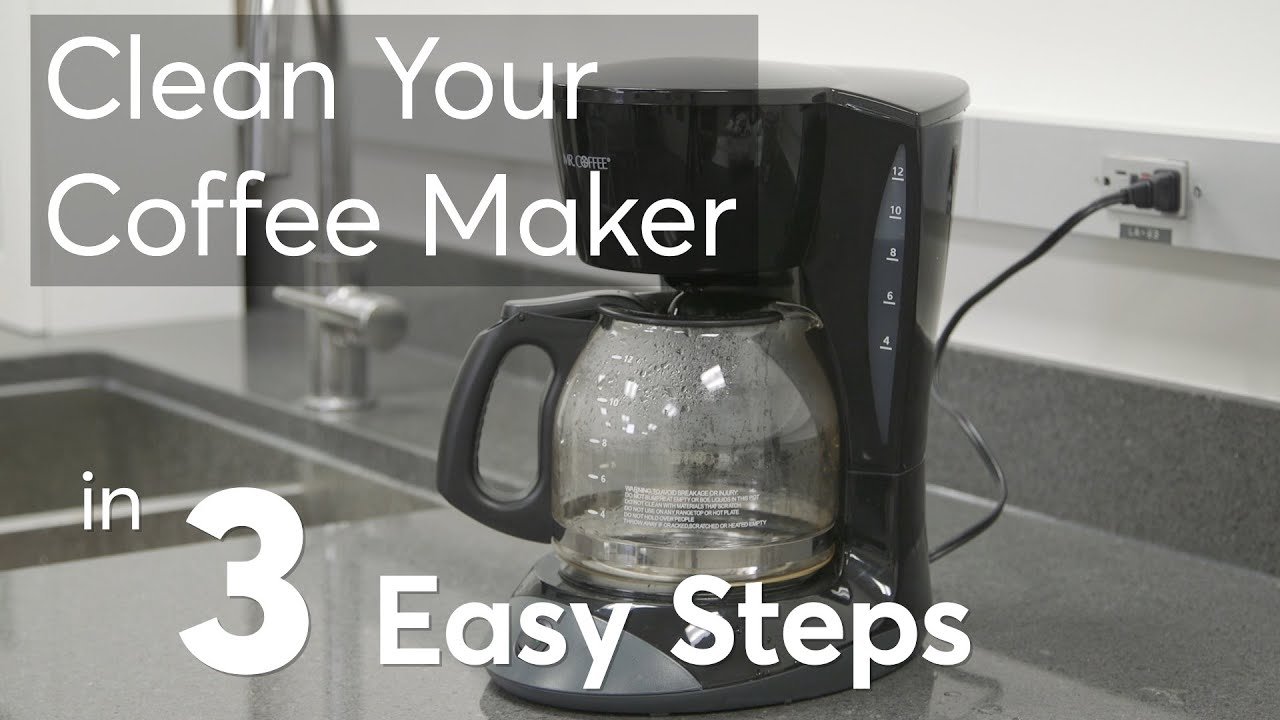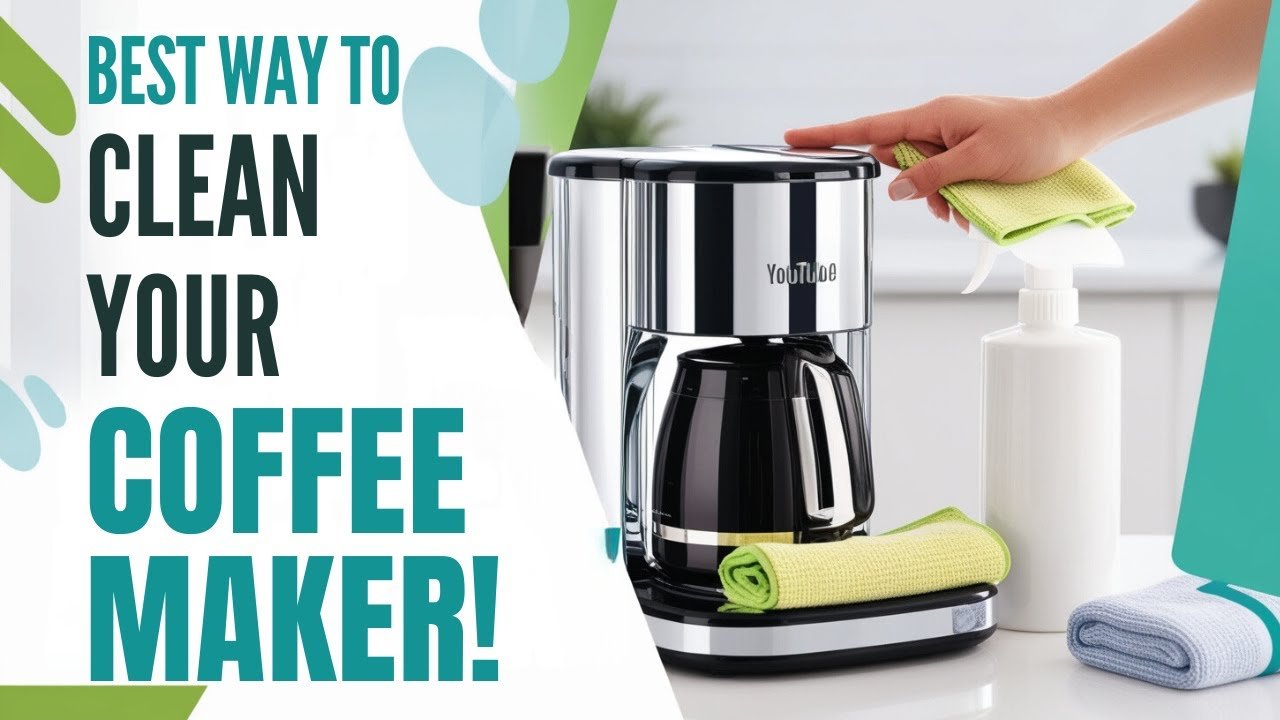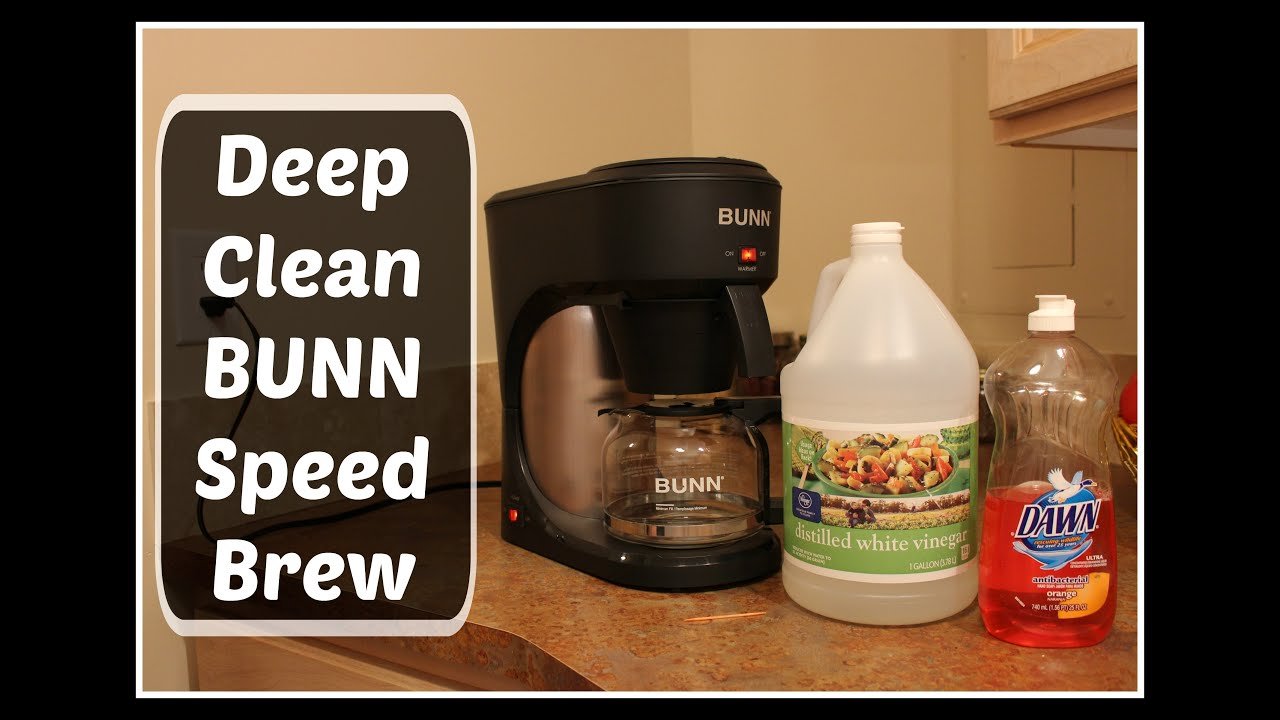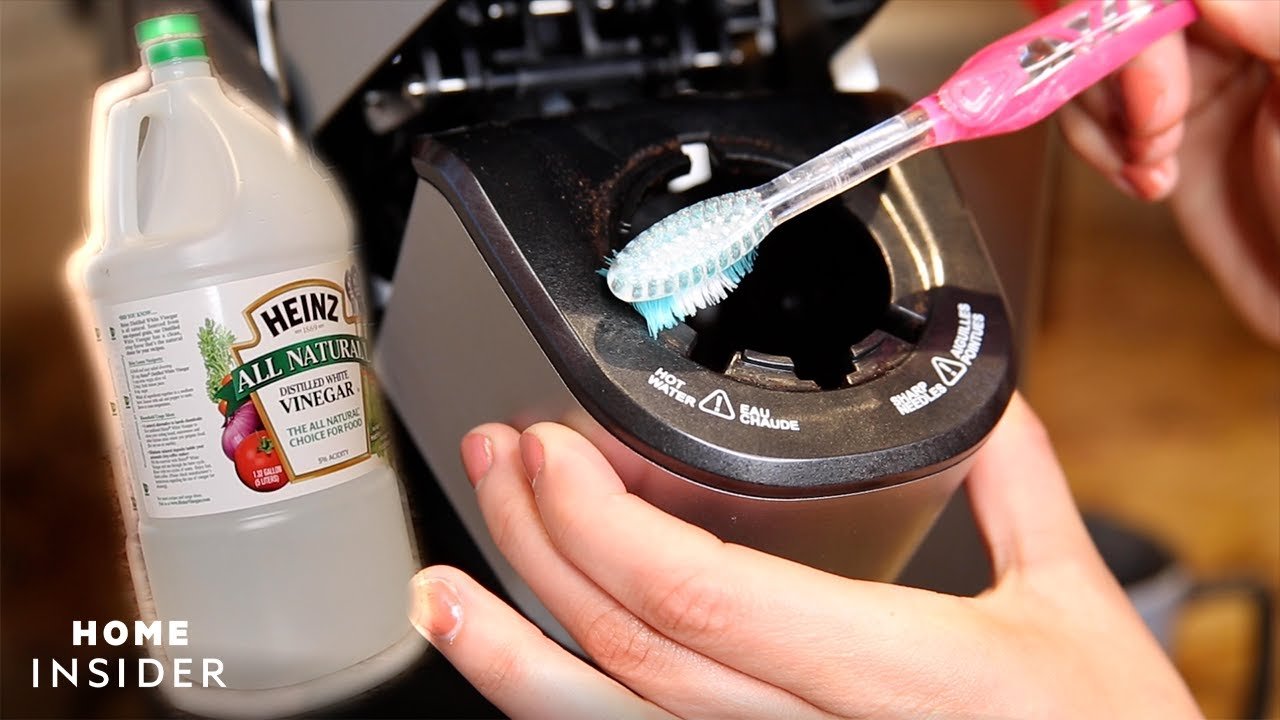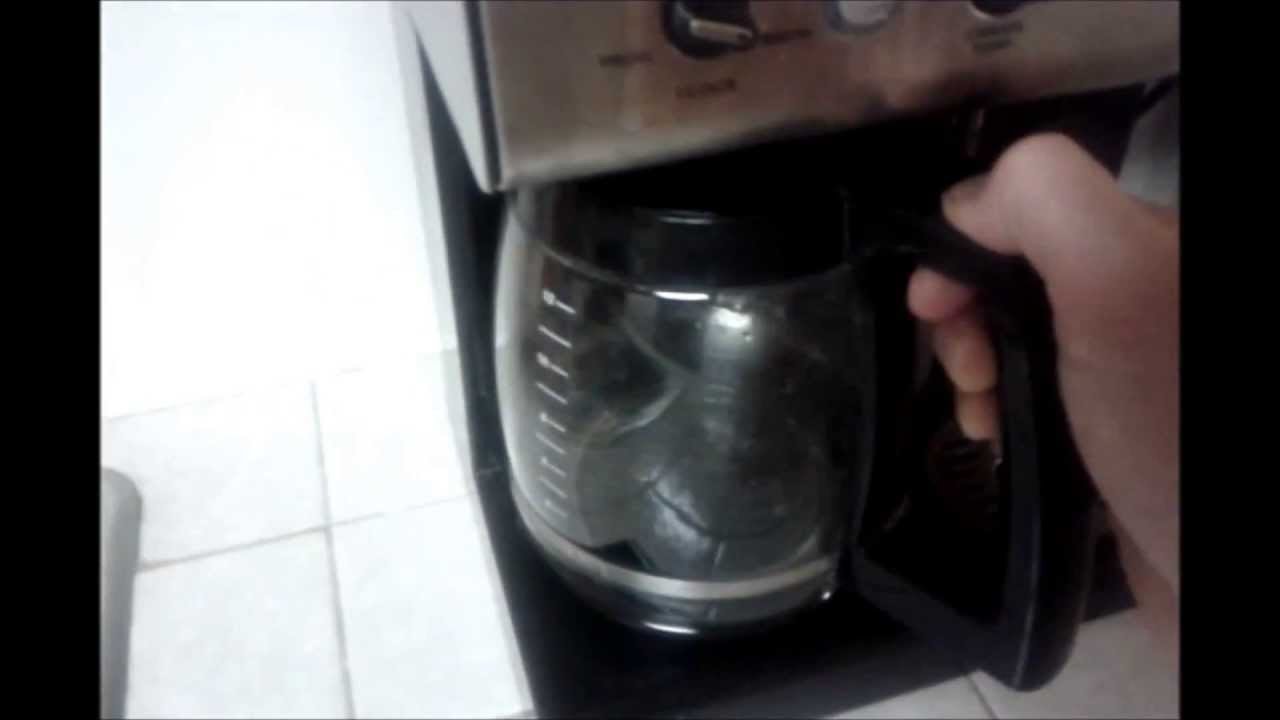Cleaning and maintaining a coffee maker might not be the most exciting task, but it’s essential for keeping your morning brew tasting great. Many people wonder, what is the best way to care for their coffee machine? Let’s dive into the best practices for keeping your coffee maker in top shape.
The best way to clean a coffee maker is to regularly use a mixture of half white vinegar and half water, running it through a brewing cycle to remove buildup and bacteria. This simple method ensures your machine stays clean and delivers the freshest coffee possible. Make sure to rinse it thoroughly with water afterward to remove any vinegar smell.
The rest of the article will help you explore what makes vinegar such an effective cleaner, provide alternative cleaning methods, and offer tips for regular maintenance. Expect some easy tricks and expert advice to keep your coffee maker running smoothly.
- Getting to Know Your Coffee Maker
- A Fresh Start: Daily Cleaning Habits
- Deep Clean Dive: Escalating the Battle Against Buildup
- Natural Cleaning Agents: Pantry Powers Unite!
- Filtered Facts: The Secret to Better Brew
- Troubleshooting Common Coffee Maker Woes
- Following the Brew-tiful Ending
- Frequently Asked Questions
Getting to Know Your Coffee Maker
Coffee makers are essential morning companions. Understanding their parts and daily upkeep helps extend their life and improve your coffee.
Anatomy of a Coffee Maker
A coffee maker seems straightforward. But, it’s got several key parts. Removable parts like the carafe, filter basket, and water reservoir need special attention. These are usually easy to detach, which makes cleaning them simpler.
Internal components include the heating element and the water tube. These are crucial for the brewing process. While not often accessible, it’s important these stay clean and free from buildup.
Some models have a cleaning indicator. This light signals when internal cleaning is necessary. Paying attention to these signals can prevent future problems and ensure your coffee tastes great.
Understanding Daily Maintenance
Daily maintenance is the secret to a long-lasting coffee maker. Start by emptying the grounds and rinsing the filter basket after each use. This prevents old coffee from affecting your next cup.
A quick wipe of the exterior surfaces with a damp cloth can keep spills at bay. Occasionally check and clean the water reservoir and carafe to prevent limescale, especially if using hard water.
Referencing Mr. Coffee’s guide, mixing white vinegar and water can effectively descale and maintain the coffee maker’s cleanliness. Simple daily efforts help prevent bigger issues and ensure consistently good coffee.
A Fresh Start: Daily Cleaning Habits
Maintaining a clean coffee maker is about establishing daily habits. The focus lies on simple tasks like wiping down surfaces, tidying filter baskets, and appreciating the humble sponge. These steps make sure your coffee tastes fresh and keeps your machine in top shape.
Wiping and Rinsing Basics
Start by wiping down your coffee maker’s exterior with a damp cloth. This removes dust and fingerprints. Pay special attention to areas that come into contact with coffee and steam, as residue can build up there.
Use clean water to rinse any removable parts. Parts like the carafe and lid should get a quick rinse daily. It helps prevent coffee residue from hardening. Consistency is important, and these small efforts keep your machine spotless.
The Art of Tidying Filter Baskets
After brewing, remove the filter basket and discard the coffee grounds. Giving this a rinse under clean water prevents leftover grounds from affecting your next brew. It also helps your coffee maker run efficiently.
It’s a good idea to do this step right away. If you wait too long, coffee grounds may harden. Regular cleansing helps avoid stubborn stains and keeps the machine ready for use.
Tip: Consider using a disposable paper liner, which makes disposal quick and reduces grounds left behind.
Sponge: The Unsung Hero
A sponge is an essential tool for cleaning your coffee maker. Its soft texture is great for wiping down surfaces without leaving scratches. Regularly replace the sponge to avoid spreading bacteria.
Focus on those hard-to-reach spots where coffee splatters. The sponge excels at cleaning tricky areas like the groove under the carafe lid.
Keep the sponge sanitized to maintain hygiene. Regularly soak it in a mix of hot water and vinegar. This not only extends the sponge’s life but also ensures a fresh start for your coffee rituals.
Deep Clean Dive: Escalating the Battle Against Buildup
Keeping a coffee maker at its best requires regular deep cleaning. This battle against buildup demands the right strategies, such as descaling and using specialized cleaners, to conquer mineral deposits and coffee oils.
Decoding Descaling
Descaling is crucial to maintaining your coffee maker’s performance. It targets mineral buildup from hard water, which can clog the system and affect taste. Descaling begins with a special descaling solution or a mix of white vinegar and water. Run this through the machine to dissolve the minerals. For most machines, this should be done every three months.
Descaling Steps:
- Empty the carafe and filter.
- Fill the reservoir with the solution.
- Run a brew cycle.
- Rinse with fresh water.
Follow your manufacturer’s instructions for the best results. This process not only extends the life of your coffee maker but also ensures you always have a fresh-tasting brew.
All About Specialized Coffee Maker Cleaners
While vinegar is popular, specialized coffee maker cleaners are designed for more thorough cleaning. They can effectively remove coffee oils and residues that regular descaling might miss. These cleaners come in liquid or tablet form and are often tailored for specific brands.
Using a coffee maker cleaner is simple. Add it to your machine as instructed, run a cycle, and rinse. Repeat as needed based on usage and machine type. These cleaners offer an advantage by being easy to use, and some even provide antibacterial benefits, ensuring your coffee maker stays hygienic.
Choosing the right cleaner can make all the difference in maintaining your machine, giving you great coffee day after day. Consider regularly alternating between natural solutions and specialized cleaners for comprehensive maintenance.
Natural Cleaning Agents: Pantry Powers Unite!
Discovering natural cleaning agents in your pantry is like finding a treasure chest for your coffee maker. These everyday items are powerful, eco-friendly, and safe. Read on to find out how white vinegar, baking soda, and dish soap play a role in keeping your coffee maker clean and efficient.
Vinegar: The Liquid Gold Standard
White vinegar is a powerhouse in kitchen essentials. It’s fantastic for descaling your coffee maker. Limescale buildup can reduce your coffee maker’s efficiency and affect the taste of your coffee. Vinegar’s acidity is perfect for dissolving these stubborn deposits.
Here’s a simple method:
- Mix equal parts of water and white vinegar.
- Pour the solution into the coffee maker’s reservoir.
- Run a brew cycle, then follow with two cycles with just water to rinse.
This method not only clears the scales but also eliminates unwanted odors. It helps maintain a flavorful cup of coffee. Plus, using vinegar is cost-effective compared to commercial products. Learn more about using vinegar for cleaning.
Baking Soda: The Fizzy Phenomenon
Baking soda is another versatile cleaning agent sitting in your pantry. Known for its stain-removing qualities, it’s perfect for tackling any stubborn stains inside your coffee maker.
Here’s a quick guide:
- Mix a quarter cup of baking soda with one cup of warm water.
- Stir until the powder dissolves completely.
- Pour the mixture into the reservoir and run a brew cycle.
Baking soda’s gentle abrasiveness helps scrub away grime, while its deodorizing properties freshen the machine. This method is a safe, chemical-free alternative to clean the coffee pot and other removable parts. It’s a reliable way to ensure your morning brew remains tasty and fresh. Check out more ways to use baking soda as a cleaner.
Dish Soap Diplomacy
Dish soap offers a gentle, yet effective cleaning option when used correctly. It works well for routine maintenance and cleaning visible parts like the carafe or filter basket.
Here’s a step-by-step:
- Fill a sink with warm, soapy water using a few drops of dish soap.
- Soak removable parts of the coffee maker.
- Rinse thoroughly and dry before reassembling.
Dish soap helps to cut through oils and coffee residues, ensuring a clean surface inside and out. Its mild nature makes it ideal for use on various coffee maker parts without causing damage. This method is quick, simple, and perfect for regular upkeep. Discover how dish soap can be used effectively.
Filtered Facts: The Secret to Better Brew
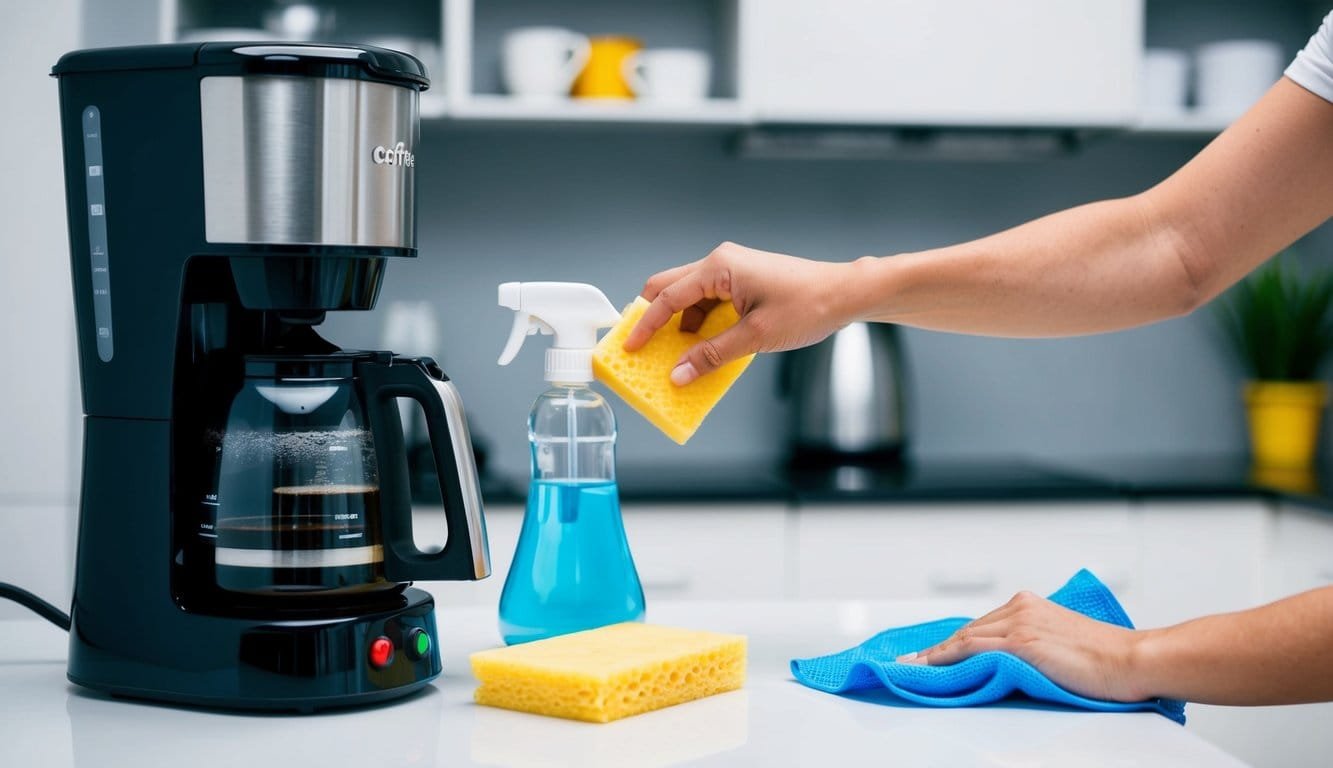
Using the right water can make a big difference in your coffee’s flavor. Clean and soft water improves the extraction process and makes a smoother cup.
Filtered Water vs. Hard Water
Choosing between filtered water and hard water can affect the taste of your coffee. Filtered water is free from impurities, giving your brew a cleaner and more consistent flavor. By removing minerals like calcium and magnesium, filtered water allows the true taste of the coffee beans to shine.
On the other hand, hard water contains these minerals, which can affect your coffee’s taste. They might contribute to an inconsistent flavor. Moreover, hard water can lead to mineral build-up in your coffee maker, impacting the brewing cycle and machine performance. This requires more frequent cleaning to keep your coffee maker in top shape.
In deciding between the two, opting for filtered water is generally a better choice for maintaining your coffee maker and enhancing the coffee taste.
Troubleshooting Common Coffee Maker Woes

When a coffee maker acts up, figuring out the problem can be baffling. Common issues often involve confusing error messages, the buildup of mineral deposits, or even the surprise presence of yeast and mold. Understanding these causes can help keep coffee makers running smoothly.
Deciphering Coffee Maker Messages
Modern coffee makers with digital displays are handy, but the messages they show can sometimes seem like a complex code. Each signal or beep usually has a specific meaning. Common alerts include “cleaning required” or “descale needed.”
Checking the owner’s manual often helps. Key tip: If a message includes words like “descale,” it’s about mineral deposits. Using a descaling solution or a mix of water and vinegar can help clear these. Regular maintenance by following cleaning instructions is key to preventing these alerts from popping up.
Mysteries of Mineral Deposits
Mineral deposits love to hide in coffee makers, especially if they are fed by hard water. These deposits can lead to slower brewing times and lukewarm coffee. They act like gremlins, undercutting performance. To battle them, descaling becomes crucial.
Descaling tips:
- Frequency: Once a month if you have hard water.
- Tools: Descaling solutions or a mixture of vinegar and water work well.
Regular cleaning can prevent these sneaky deposits from causing drama in your morning routine. Following specific cleaning instructions helps ensure all internal pathways get thoroughly cleaned.
Invasion of Yeast and Mold
Finding out that yeast and mold can take up residence inside a coffee maker is definitely a shocker! They thrive in warm, damp places — like the coffee grounds left in the basket too long. The problem can become more pronounced if cleaning isn’t done regularly.
Prevention steps:
- Keep the coffee maker open after use so it can dry out.
- Clean the removable parts with soap and water often.
Deep clean monthly using a mix of white vinegar and water to fight off yeast and mold regularly, keeping your coffee fresh and tasty.
Following the Brew-tiful Ending
Keeping your coffee maker in tip-top shape ensures every cup is fresh and flavorful. Routine cleaning and knowing when to upgrade can enhance your brewing experience. Caring properly for your machine extends its life and maintains that perfect brew cycle every time.
Ensuring Longevity Through Care
To prolong the life of a coffee maker, regular maintenance is key. Daily upkeep includes emptying the carafe and removing used coffee grounds. After each brew cycle, it’s important to rinse removable parts to prevent build-up. This avoids stale flavors sneaking into your next cup.
A monthly deep clean using a mix of water and vinegar can be transformative. Run this solution through the brew cycle, then follow up with two rinse cycles of clear water. This helps remove mineral deposits that might clog the system.
Establish a maintenance schedule. Note when you’ve cleaned last and aim for consistency. Make it a fun tradition, perhaps every first Saturday, to ensure your coffee maker stays clean and brews beautifully.
Coffee Maker Overhaul: When to Say Goodbye
Sometimes, replacing the coffee maker is necessary. Look for signs like increased noise, leaking, or uneven brewing. These may signal it’s time for a new machine. If repair costs are half the price of a new coffee maker, it’s often wiser to invest in a replacement.
Older machines without modern features, like auto-brew cycles, might also warrant an upgrade. Newer models can have energy-saving functions and better durability. Consider the cost of ongoing maintenance versus the price of a new unit with improved capabilities.
Imagine waking up to a sleek, efficient machine that brews faster and better. A reliable coffee maker can become a trustworthy companion in your daily routine, making those morning cups even more delightful.
Frequently Asked Questions
Discover the best practices for maintaining your coffee maker’s peak performance. From cleaning schedules to choosing between vinegar and descaling solutions, these tips will help keep your coffee tasting fresh.
How often should I practice the art of coffee maker hygiene?
It’s wise to clean your coffee maker at least once a month. This keeps mineral buildup and mold at bay, ensuring every cup tastes clean and fresh. If you brew daily or notice any odd flavors, consider cleaning more frequently.
Can you spill the beans on the best vinegar type for a squeaky-clean machine?
White vinegar is the go-to choice for cleaning coffee makers. Its acidic properties effectively break down mineral deposits and disinfect your machine. It’s also affordable and easy to find, making it the best option for your regular cleaning ritual.
What’s the magical ratio of vinegar to water for a 12-cup pot purification ritual?
For a 12-cup coffee maker, mix equal parts of white vinegar and water. This 1:1 ratio provides the right balance to tackle stubborn gunk without overwhelming your senses. Run this mixture through a brew cycle for a thorough cleanse.
Descaling solution or vinegar: which one will be the MVP in cleaning my coffee maker?
Vinegar is a trusty DIY cleaner, but commercial descaling solutions are designed to target mineral deposits effectively. These solutions may be pricier, but they excel in machines with more significant buildup. Your choice may depend on how frequently you clean and your personal preference.
Is baking soda the secret ingredient for cleaning my coffee brewmaster?
Baking soda is great for cleaning many things but not your coffee maker. It can leave behind residues that affect taste. Stick with vinegar or a descaling solution for your coffee machine, as they do the job without any unwanted aftertaste.
Could you give me a crash course on purifying my Nespresso without sending me into a caffeine withdrawal?
Cleaning a Nespresso machine is simple. Run a descaling solution through the system. Follow up with a couple of water-only cycles to rinse out any remaining cleaner. Your machine will be ready to brew your next cup of caffeine bliss in no time.


